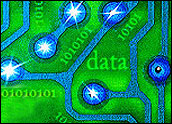
The top 10 trends in CRM was the topic of the lead-off talk by analysts Gene Alvarez and Ed Thompson at Gartner’s Customer 360 Summit last week. Most of the items were evergreens that are fixtures when such trend lists are drawn up, but there were two that caught my eye, if only because of their juxtaposition on the list.
First was the issue of “big data.” We’re now generating tremendous amounts of information on customer behaviors and preferences — so much that we’ll need new technologies and strategies to analyze and convert it from raw data into actionable information.
Next came the “Internet of Things” concept — the idea that through tracking and monitoring the things customers interact with in the real world, including the devices they carry or have in their own homes, marketers can access an even richer source of data to understand the customer.
Big data was posed as a problem. The Internet of Things was positioned as an opportunity. The people who made this list were being somewhat cheeky, I thought. Those two items are inextricably linked, and they reflect something I discovered covering other technologies — specifically telecom and networking. It’s extremely easy to collect data. It’s another thing entirely to understand how to start understanding it.
You’ve Got to Know What You’re Looking For
Analysis and management technology always lag behind our ability to collect data, and lagging behind that is the really hard part of all this: the ability to understand what’s hiding in the data that’s actually important to the business.
Perversely, you need to have a good idea of what you’re hoping to prove or discover and the indicators that will point toward it when engaging with a very large data set. That sounds a bit backward in terms of process, but it’s critical — otherwise, you’re hunting for patterns without knowing what the components of those patterns might be.
Without at least a notion of what you’re looking for, you’ll never find anything. Expecting the technology to ferret out useful information on its own is like expecting Robby the Robot to show up at your front door volunteering his services — it’s not going to happen.
Instead, as with much of CRM, you’ll need to have an understanding of the customer relationship in order to understand what you’re looking for.
If you’re selling ice cream, for example, it might be nice to know how often customers open their freezer doors, assuming you’ve figured out that correlates to the behavior of ice cream lovers. That’s a to-the-point bit of information that might help identify likely buyers (or, perhaps, likely non-buyers).
However, simply digging into the mountain of data without a hint about what you’re really looking for would make no sense. Until you can establish that ice cream lovers record more Christmas specials on their DVRs, use their microwave ovens more often, or tweet about celebrities more than the average customer, it seems wasteful to devote energy to sifting through vast volumes of data that can be collected to discover those patterns (which are entirely hypothetical, ice cream lovers. I was merely making up examples to illustrate my point).
Best Data
Should you care to invest in significant computing power and extremely powerful analytics, you could probably pull such patterns out of the data. However, it would still require you to examine “trends” identified by the analytics application to determine if they really reflected customer behaviors or if they were simply coincidences or artifacts of unrelated influences.
Instead, before turning to the data, it would be smart to turn to your customers and your sales staff to spot clear relationships between behaviors and buying.
Yes, big data and the Internet of Things will provide you with more data — but it will be data you can use to quantify and verify existing ideas about customers, not to replace the insight you gain from interacting with them.
This is both an obstacle and an opportunity — an obstacle that will be overcome with improving technology and analytical focus, and an opportunity to test hypotheses against a bigger data set. It may even reveal information that sharpens or contradicts existing customer data.
However, it will not replace the wisdom you’ve built through interacting with your customers — which is perhaps not “big data” but is nevertheless the most accurate and pertinent data you’ll ever amass. After all, what’s likely to be more useful: talking to a customer, or talking to a customer’s refrigerator?



















































